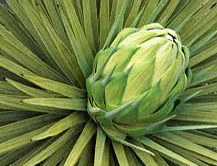
Main Page
A brief history of
Ogasawara-Ha Shorinji-Ryu Karate-Do
(Sakugawa Koshiki Shorinji-Ryu Karate-Do)
Our system is officially named Sakugawa Koshiki Shorinji-Ryu Karatedo. However, it is colloquially called Ogasawara-Ha Shorinji-Ryu Karatedo or simply Ogasawara-Ha. This references the aristocratic Ogasawara family of Aomori Ken in Northern Honshu who propagate the system and also avoids confusion with other systems. Sakugawa Koshiki Shorinji-Ryu Karatedo means "Sakugawa Orthodox Shaolin temple-school of the Empty-hand way". This name conveys the system's maintenance of the practice and tradition established by "Tode" Sakugawa and also its decent from the original Chinese Shaolin temple system of ch'uan fa. The "do" suffix on karate defines the system as a way of life and personal development, more than just a brutal fighting art.
Most Chinese, Japanese, and Korean empty-hand martial arts are divergent evolutionary descendants of the original Shaolin temple system (e.g., karate, kempo, taekwondo, kung fu). An Indian Buddhist monk named Bodhidharma, who was born into the warrior Kshatriya caste and was trained in martial arts before entering monkhood, traveled to China in 526 AD and came to reside at the Shaolin temple in Hunan province. He found the monks there too weak and lethargic for extended rigorous meditation, so he taught his followers breathing and conditioning exercises derived from his martial training. The original system of Shipa Lohan Sho developed into Shaolin ch'aun fa (kung fu). The original Shaolin system did not include kicks, which were later added.
In Okinawa a form of boxing called Tode or Okinawa-te (Okinawa-hand) with straight punches, blocks, and foot techniques had developed. In 1724, Sakugawa, an Okinawan from Shuri trained in Okinawa-te, traveled to China and studied Northern style Shaolin t'su. "Tode" Sakugawa is considered the progenitor of karate, and most karate styles claim descent from his teachings. Sakugawa's student was another legendary figure in Okinawan martial arts, Matsumura. Matsumura served as a security advisor and instructor for the Okinawan royal family. Among his students were Itosu and Hanishiro. Hanishiro continued to train under Itosu after Matsumura's death. Itosu's students founded many of the main karate schools practiced today, including Funakoshi (Shotokan), Chibana (Shorin-Ryu), Mabuni (Shito-Ryu), Motobu (Motobu-Ryu), and Miyagi (Goju-Ryu). Jiro Ogasawara, of the aristocratic Ogasawara family of Aomori Ken in Northern Honshu, began learning karate from Hanishiro in 1926 when sent to Okinawa as an Ambassador. Upon returning to Japan, Ogasawara combined the karate he learned in Okinawa with aspects of the Ogasawara system of Ryujin Kempo, including nage waza (throwing), kansetsu waza (grappling), shime waza (choking), and osaekomi waza (immobilization), to form Sakugawa Koshiki Shorinji-Ryu Karate-do, for teaching to the public. Ryujin Kempo has been propagated by the Ogasawara clan since 710 AD when Hideyuki Ogasawara succeeded the Chinese monk Hui Neng. Hui Neng was a ch'aun fa master from the Southern school of Shaolin who traveled to Japan and settled in Kogawara-mura, Aomori-prefecture in 688 AD.
Yuishinkai Kobujutsu is taught in conjunction with Shorinji-Ryu Karate-do. Yuishinkai Kobujutsu studies the use of traditional Okinawan weapons such as the bo, sai, tonfa, and kama.
Dr. Thomas Cauley, kyoshi, learned Sakugawa Koshiki Shorinji-Ryu Karate-do from the Ogasawara in Japan. With over 50 years of training, he has progressed to the position of International Director for the system and 8th degree black belt, both of which were awarded in Japan. Cauley kyoshi studied Yuishinkai Kobujutsu under Yasuhiro Konishi and Shoen Fukuda, Northern Director (Japan) for Yuishinkai. He also studied briefly under Motokatsu Inoue and his son Takekatsu Inoue (past and current Headmasters). Both Konishi and M. Inoue learned kobudo from Shinken Taira, founder of Yuishinkai Kobudo. In addition to his training in Sakugawa Koshiki Shorinji-Ryu Karate-do, Ryujin Kempo, and Yuishinkai Kobujutsu, Cauley kyoshi also undertook collateral training in other systems while in Japan and has attained black-belt rank in 10 other systems, most notably a 5th dan in Shindo Jinen Ryu (from Konishi), 5th dan Shotokan, 5th dan Motobu Ryu (from Motobu), 4th dan Shorin Ryu, 4th dan Judo, and 3rd dan Okinawan Kenpo. Dr. Cauley brought Sakugawa Koshiki Shorinji-Ryu Karate-do to the United States in the 1970s and guides our study in locations outside of Japan. Cauley kyoshi now resides in Tennessee, USA.
Instruction in San Diego is provided by Randy Brooks, 5th dan, Suzi Brooks, 3rd dan, and other 2nd and 1st dan sempai. Mr. Brooks began martial arts training in the late 80s in Wado-Ryu karate and has had over fifteen years of training in Ogasawara-Ha, six years of which were at the University of Georgia Budokai dojo under Dr. Brad Cahoon, 6th dan, and also trained regularly during that time with Dr. Van Horne, 6th dan and Cauley Kyoshi. His rank is certified by the Japan Karatedo Federation through the Zen Tohoku Karatedo Kempo Kumiai (All Northern Japan Karatedo and Kempo Union). He was named Student of the Year in Ogasawara-Ha, U.S. Division, in 2002, and teacher of the year in 2011 and again in 2012. Mr. Brooks has also had many years of training in Aikido, Shindo Muso Ryu Jodo, Tae kwon do, Judo, Wado-Ryu karate, and Shito-Ryu karate. Dr. Brooks (Suzi) trained in Tae kwon do before beginning Ogasawara-Ha and was named Student of the Year in Ogasawara-Ha, U.S. Division, in 2007. Dr. Brooks has also undertaken collateral training in Shindo Muso Ryu Jodo.
Go to the international Sakugawa Koshiki Shorinji-Ryu Karate-Do web site.